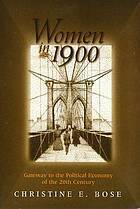


Books in series

Applications of Feminist Legal Theory to Women's Lives
Sex, Violence, Work, and Reproduction
1996

Doing Comparable Worth
Gender, Class, and Pay Equity
1989

Domesticity and Dirt
Housewives and Domestic Servants in the United States 1920-1945
1990

Families and Work
1987

Families in the U.S.
Kinship and Domestic Politics
1998

Feminist Organizations
Harvest of the New Women's Movement
1995

Individual Voices, Collective Visions
Fifty Years of Women in Sociology
1995

Inside Agitators
Australian Femocrats and the State
1996

It's Our Military Too
Women and the U.S. Military
1996

Job Queues, Gender Queues
Explaining Women's Inroads into Male Occupations
1990

Just A Temp
1996

Marriage in a Culture of Divorce
1999

Muchachas No More
Household Workers in Latin America and the Caribbean
1985

Never Married Women
1987

Parental Leave
1991

Putting On Appearances
Gender and Advertising
1988

Street Woman
1986

Taking Time
Parental Leave Policy and Corporate Culture
1998

Teen Mothers and the Revolving Welfare Door
1996

Thinking about the Baby
Gender and Transitions into Parenthood
1998

Başkalarının Kiri
Kapıcılar, Gündelikçiler ve Kadınlık Halleri
2000

Women and Stepfamilies
Voices of Anger and Love
1988

Women and the Politics of Empowerment
1987

Women Between Two Worlds
Midlife Reflections on Work and Family
1992

Women in 1900
Gateway to the Political Economy of the 20th Century
2001

Women in the Sanctuary Movement
1991

Women of the new right
1986

Women of the Upper Class
1983

Women Reformed, Women Empowered
Poor Mothers and the Endangered Promise of Head Start
1996

The Women's movements of the United States and Western Europe
Consciousness, political opportunity, and public policy
1987

Womens Paid & Unpaid Labor
1993

Women's Political Voice
How Women are Transforming the Practice and Study of Politics
1997

Women, Class, and the Feminist Imagination
1989

Women, International Development, and Politics
The Bureaucratic Mire
1997